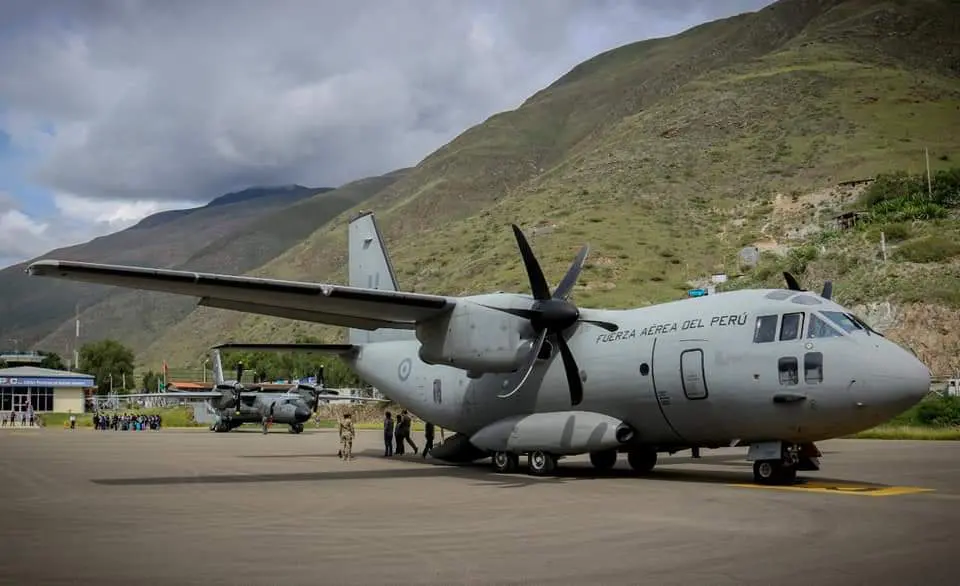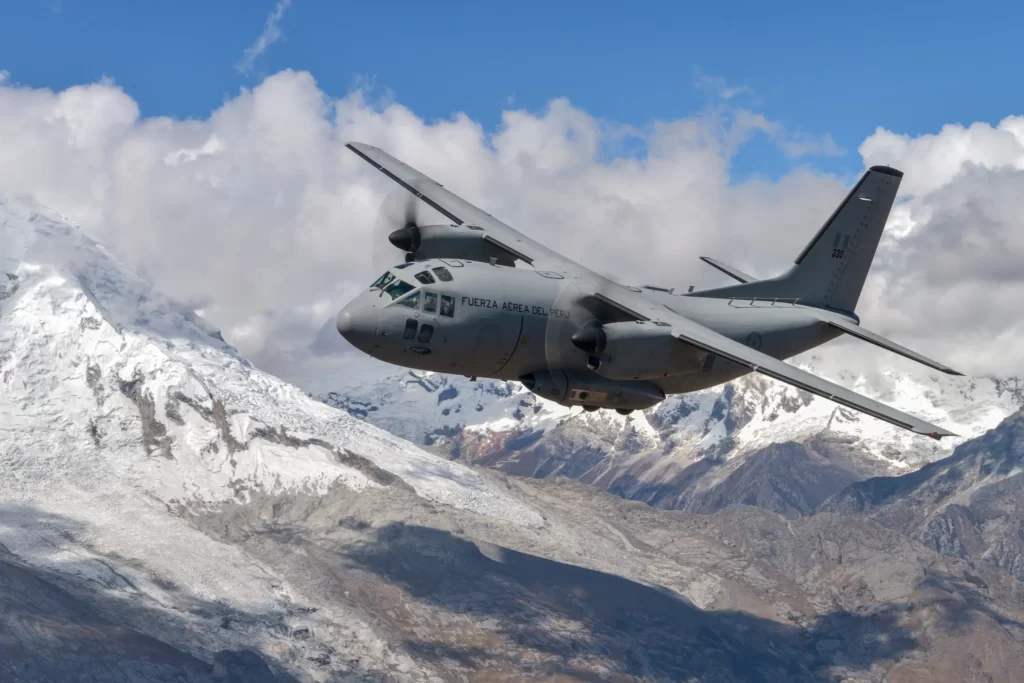The two Rolls-Royce AE 2100-D2A turboprop engines roar with increased intensity, spinning the six-bladed Dowty R-391 propellers even faster, and the Leonardo C-27J Spartan begins its takeoff roll on the tarmac of Lima’s Jorge Chávez International Airport, Peru. It doesn’t need much runway; in a matter of seconds, it starts to climb towards its destination, this time, the airport in Jauja, located at 3,363 meters above sea level in the central Andes.
While the pilots maintain course and altitude, a Peruvian Air Force non-commissioned officer acting as the cargomaster takes a glance at the cargo hold containing their valuable military cargo: Army personnel and classified equipment.

This time their destination is the Valley of the Apurímac, Ene, and Mantaro Rivers (VRAEM), from where they will return in the evening with rested soldiers and equipment for specialized maintenance.
Last time, their returning passengers were several injured individuals from a traffic accident where a bus veered off the road and plummeted into a 30-meter abyss.
They’ve also played the role of “air firefighters,” delivering water through a system to forest fires that affected the mountains of the Quispicanchi province in Cusco. And a couple of years ago, they were tasked with organizing an airlift for patients on the brink of death due to the COVID-19 pandemic, an operation that posed significant biosecurity challenges.
The operational capabilities of the FAP’s C-27Js have improved, with advancements such as the use of night vision goggles (NVGs), enabling their crews to conduct night flights.
Another capability they’ve acquired is firefighting, using the “Guardian” system from Caylym Technologies International LLC, whose containers can hold 264 gallons or 1,000 liters of water.
Exceptional Performance
Nine years since its introduction into service with the Peruvian Air Force (FAP), there’s anticipation regarding the feasibility of acquiring at least two more units of the Leonardo C-27J Spartan system. The most enthusiastic are the members of the 8th Air Group, whose 844th Air Squadron operates this system, which continues to demonstrate excellence and reliability for operations.

This is part of a project within the FAP’s cargo capacity recovery plan with medium-capacity aircraft, announced nearly a year ago. The country’s political instability seems to have slowed down the acquisition, but negotiations continue to add more units, considering the needs of a geographically extensive and diverse country.
The figures speak for themselves: over these nine years, the system has surpassed 12,300 flight hours, carrying 7 million kilograms of cargo and over 190,000 passengers on missions both domestically and internationally.
You may also like: Patrollers of the Peruvian skies: the aviation of the Peruvian National Police celebrates 40 years














